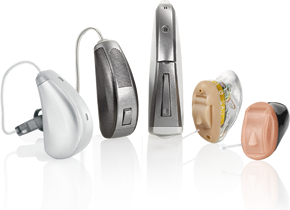Free hearing tests in Thornton-Cleveleys
Better hearing
Whenever we visit a G.P. it can always be an unsettling and worrying experience. Do not be concerned, it is not like that with a hearing test. Of course, nobody wants to be told that they have hearing loss that may require further investigation by a G.P. or being fitted with hearing aids.
However, things could be far worse and if you look at the positive side of the situation, being able to hear clearly again gives everyone, yourself, your family and friends, a better quality of life. No more saying Pardon! No more answering questions incorrectly and feeling uncomfortable.
So what is involved in taking an audiometric hearing test?
The hearing test process – step one
The first step is to take some personal details and carry out an inspection of the ear canals to ensure that there is not an underlying hearing problem that requires referral to a G.P. such as impacted wax.
Once this has been completed, we need to determine with whom and what you are having the most difficulty hearing.; we then perform an audiometric hearing test. This involves placing head phones over both ears and playing various tones into your ears and asking you to press a button every time you ear the tone, no matter how faint it is.
If you don’t hear the tone, don’t press. Gradually, we reduce the volume level until you can no longer hear the tone and we know you have not heard it because you have not pressed the button.
When we get to this point, it is what we term ‘Your Threshold of Hearing.’
The hearing test process – step two
The second test involves placing a unit called a bone conductor on the back of your ears and carrying out the same procedure as above.
The hearing test process – step three
On the third and final test, again, we use the headphones. However, this time, instead of turning the volume down, we turn the volume of the tone up and ask you to press the button if the tone becomes uncomfortably loud.
When these tests are complete, we then compare your threshold of hearing to someone who has an average normal threshold of hearing. The difference between the two denotes the type and degree of hearing loss that you have.
If we then feel that referral is not required and that fitting hearing aids would be of invaluable help, we can then advise you about which laboratory to choose to build hearing aids for you. We can show you the types and styles of hearing aids available, in the ear or behind the ear, and what functions the hearing aids have, for example, rechargeable systems and aids with smart phone compatibility.
This is followed by fitting a pair of demonstration hearing aids so you can experience the quality of life that clearer hearing offers.
The hidden risks of hearing loss
Hearing loss is almost always a gradual process and we say to everyone who has a hearing test with us, if you went to bed with normal hearing and woke up the next morning with your present hearing loss, you would feel as though the world had caved in.
In addition, there is a growing body of evidence that links hearing loss to the onset of dementia. In addition to dementia, a study from John Hopkins has revealed that hearing loss is also linked with walking problems and falls. The study can be found at – The hidden risks of hearing loss – John Hopkins
Clearer hearing is vital to your overall health and wellbeing; book your free hearing test today!








